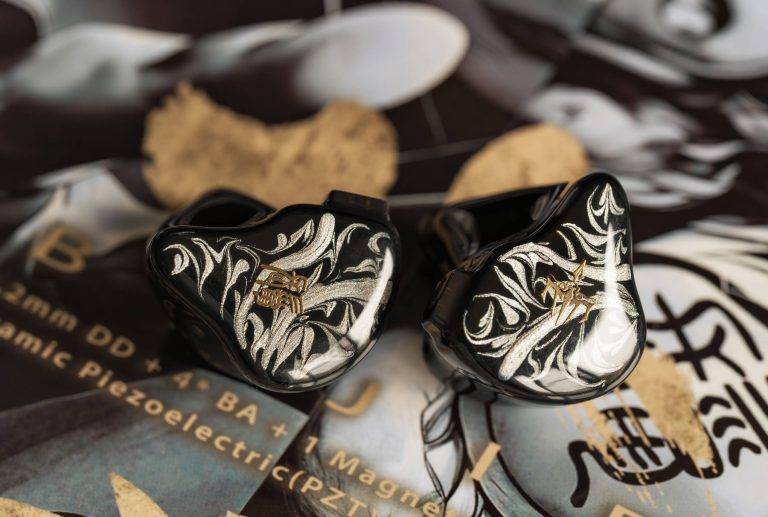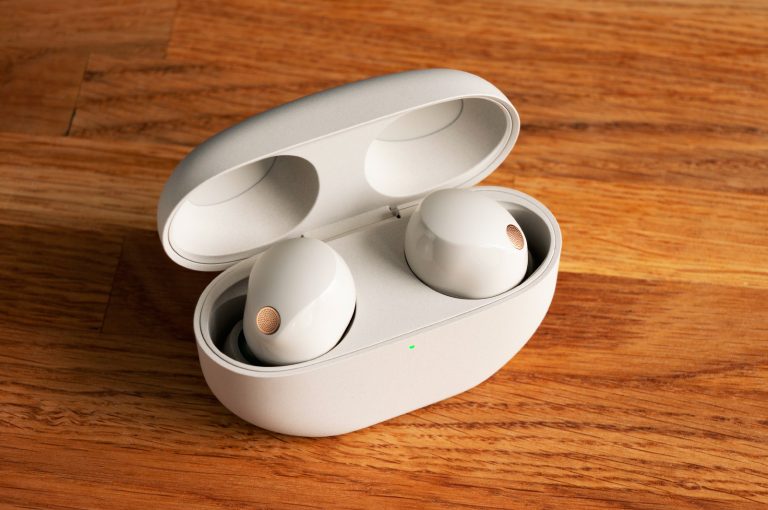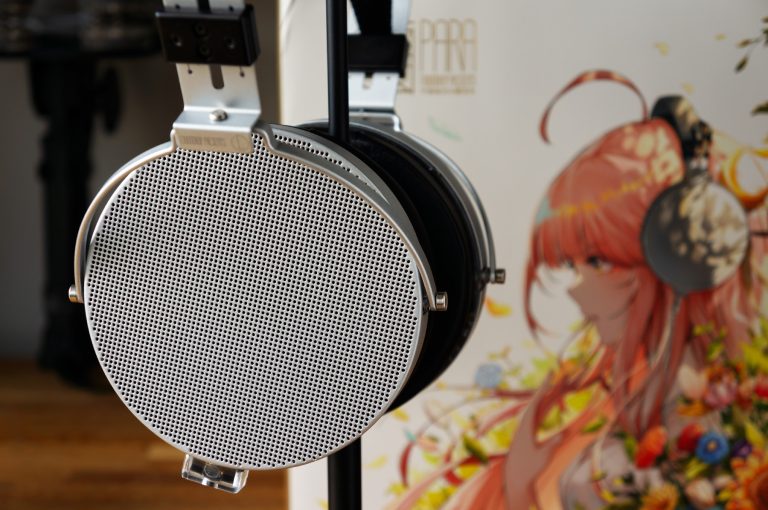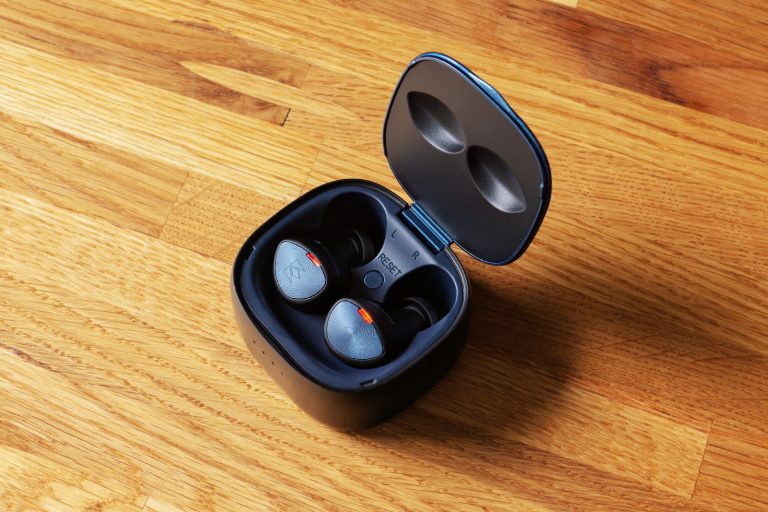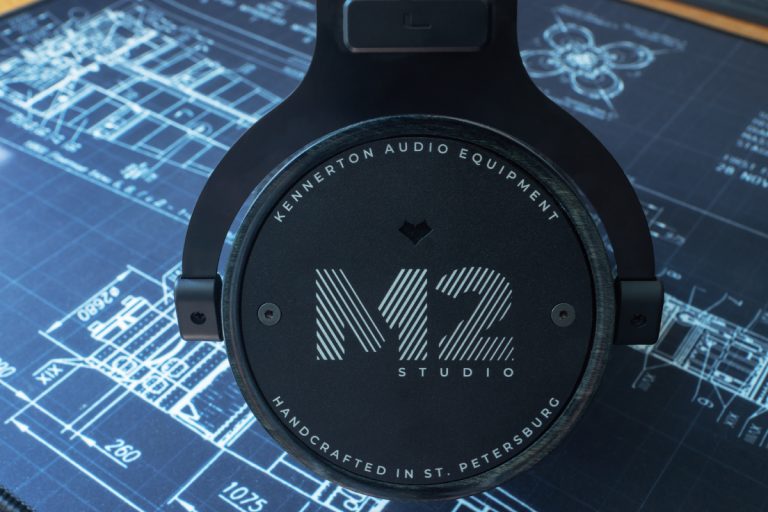Moondrop Chu 2 Headphones Review. My guilty pleasure
‘The Moondrop? Again?’ you’re probably asking the skies. Though as the majestic Marilyn Manson once said, ‘The Chu 2 are the strongest form of magic’. He didn’t, of course, but he certainly would, should he test this masterpiece. Anyways, the Moondrop Chu are once again in my hands to try and review – all thanks to one of my followers who not only challenged me to do so, but literally bought me these. For which I thank him infinitely.
In case you don’t remember, the first Chu iteration (click for their review) actually set the bar, became the benchmark, did the impossible in their ‘good and dog-cheap’ category: at the overall $20 price, and the included eartips cost $13. This is what I call ‘wattaf…’ The second iteration costs insignificantly, but less: the impressive $19.
So what did the Moondrop overcome between the versions? This is exactly what I’m going to review, alright. As them millionaire youtubers say, ‘Let’s get started, shall we?’
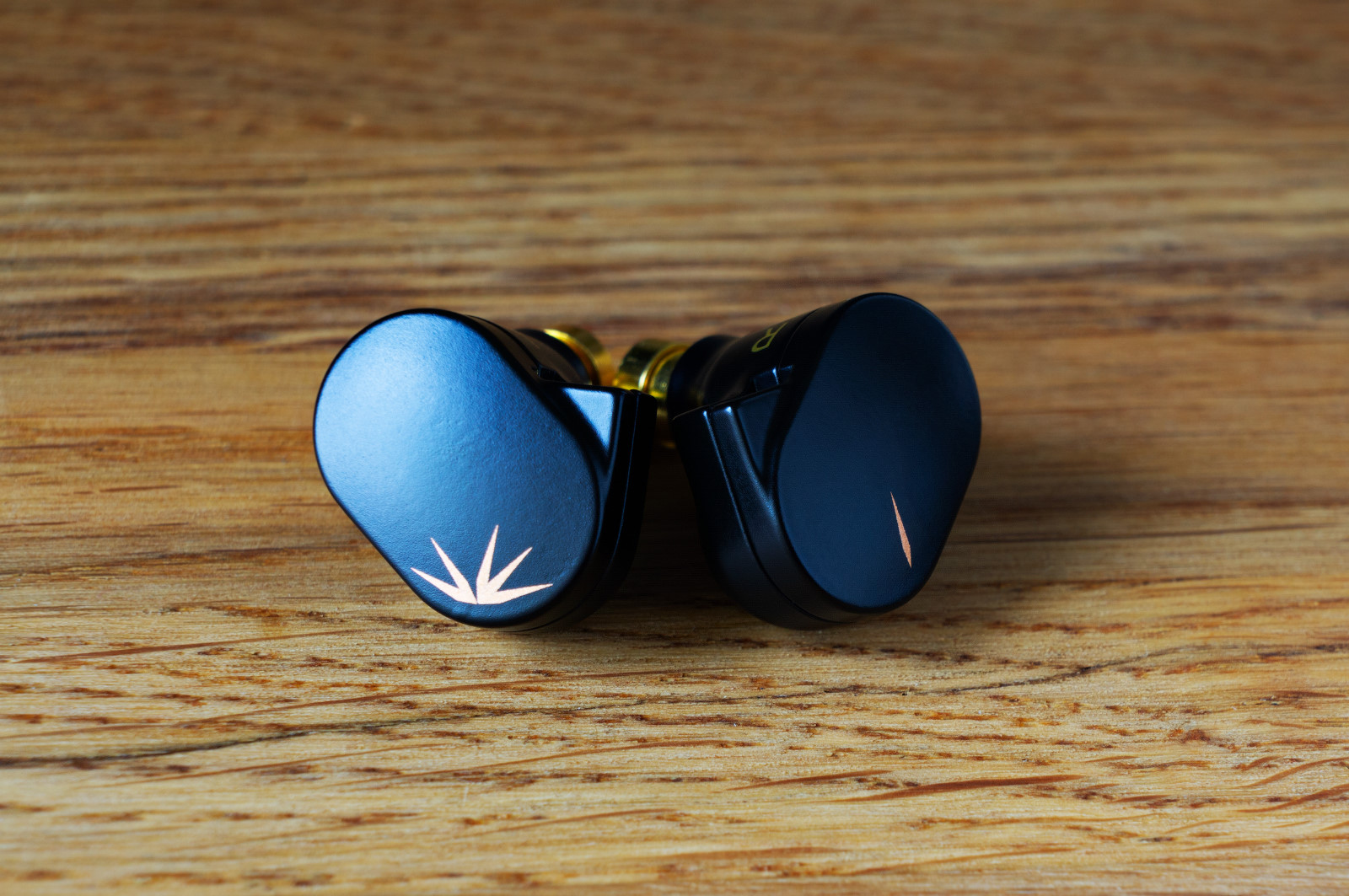
What’s included
The Chu 2 come in a wee cardboard box – traditionally, with an anime gurl on it.
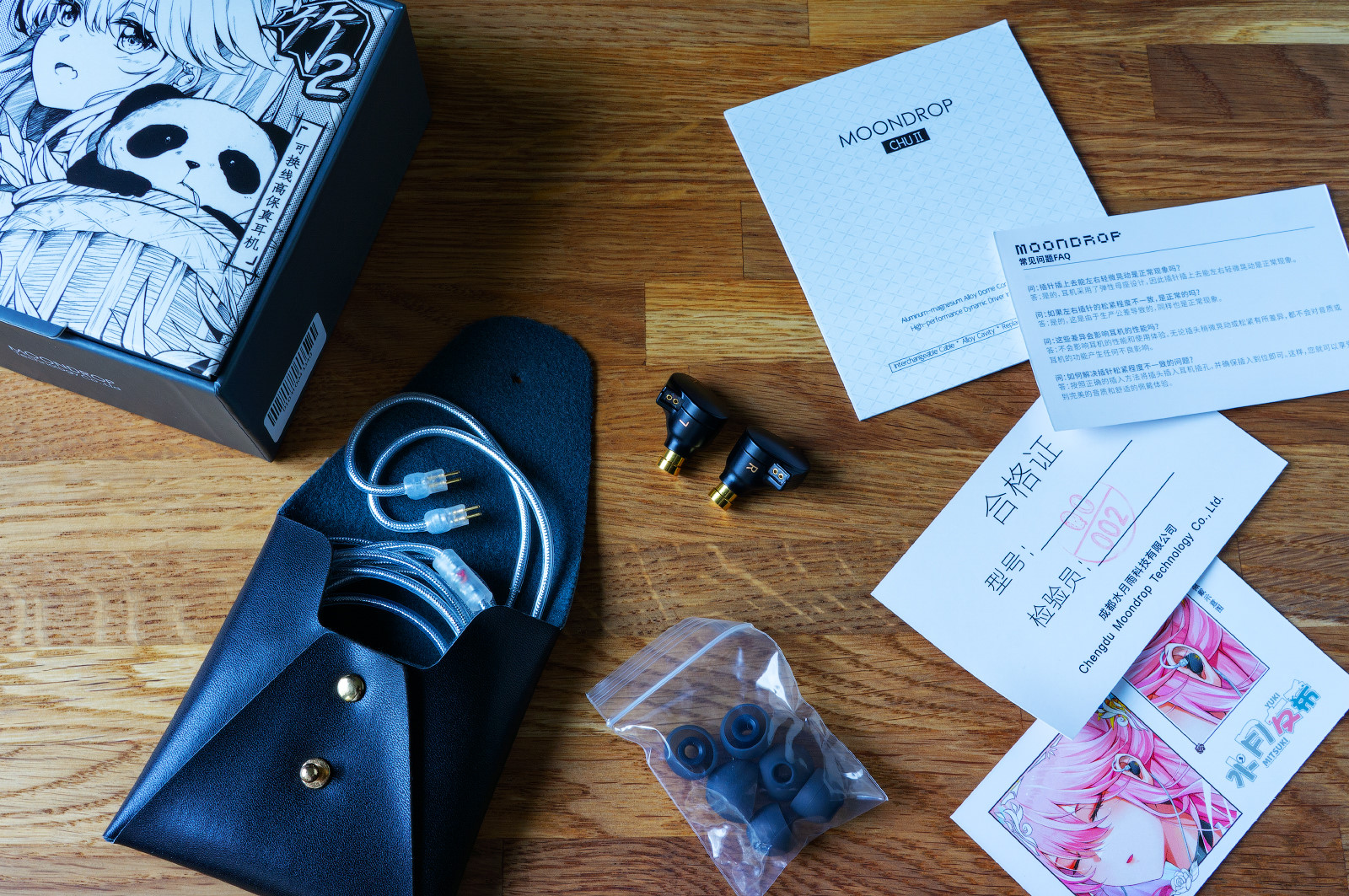
What do you get:
- the headphones themselves;
- the detachable 2-pin cable with 3.5 mm jack (no mic);
- 3 pairs of eartips of different sizes (S-M-L);
- the case;
- some papers.
Look at the eartips, by the way: these aren’t the branded Springtips, but just some generic eartips. The cable is now replaceable, though, unlike in the first Chu. They’ve updated the case, too: this one is made of faux leather – a more pleasant and reliable decision, I’d say.
The thick box cardboard, the set itself… Oh Lord, what am I trying to assess here! It’s fantastic for $19!
Design, assembly, technology
The headphone enclosures are made of zinc alloy and sport one dynamic 10-mm driver. Inside each of the enclosures, I mean. The driver diaphragm is made of aluminum-magnesium alloy. As for the sound ducts, these are copper.
You look at the headphones once, and everything seems awesome: the build, the paint finish… But if you look away and then back at the headphones…
On one of the earpieces, the sound duct is obviously crooked:
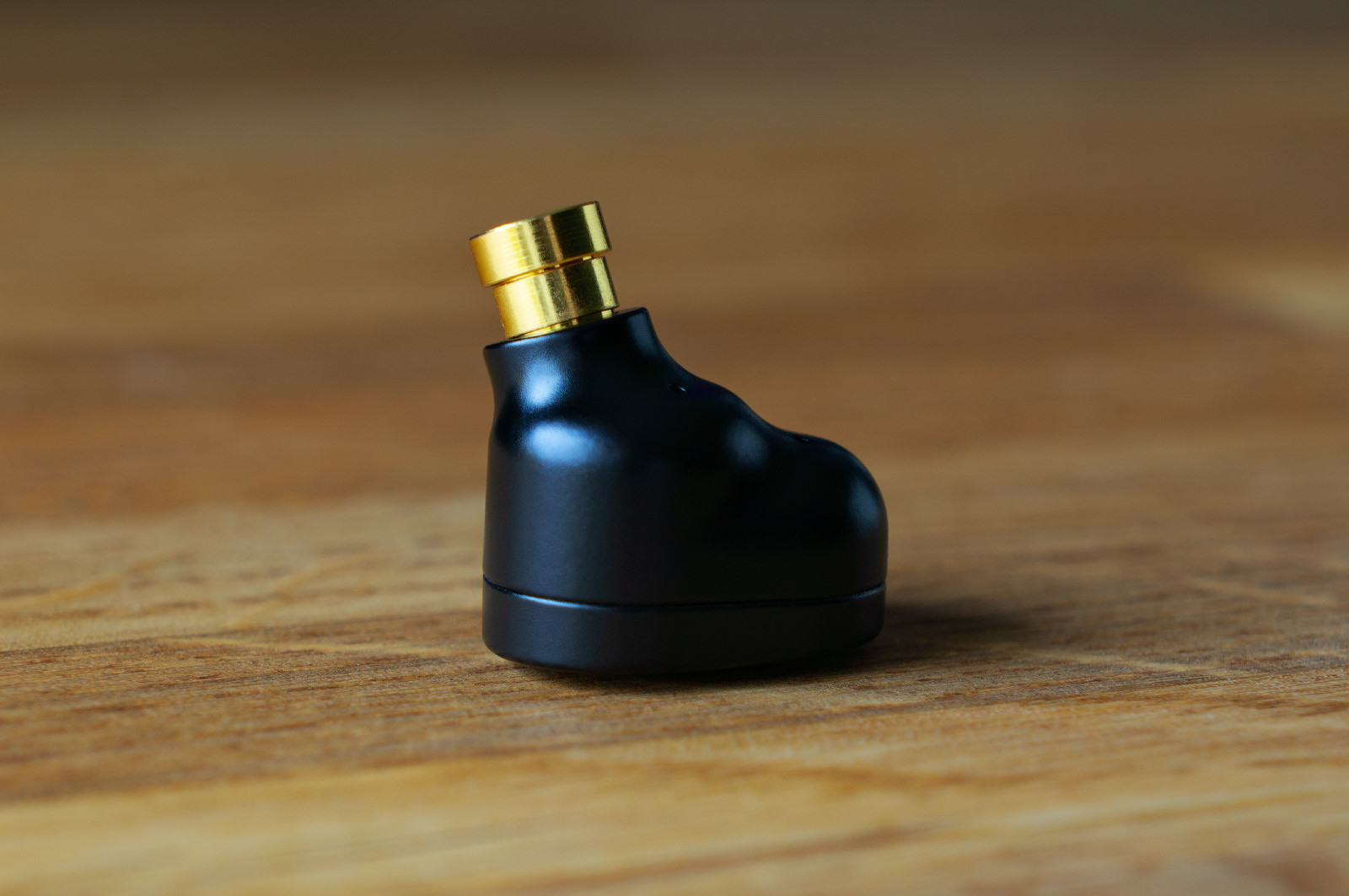
Say hi to this ridiculous molding blunder hanging on the cable connector:
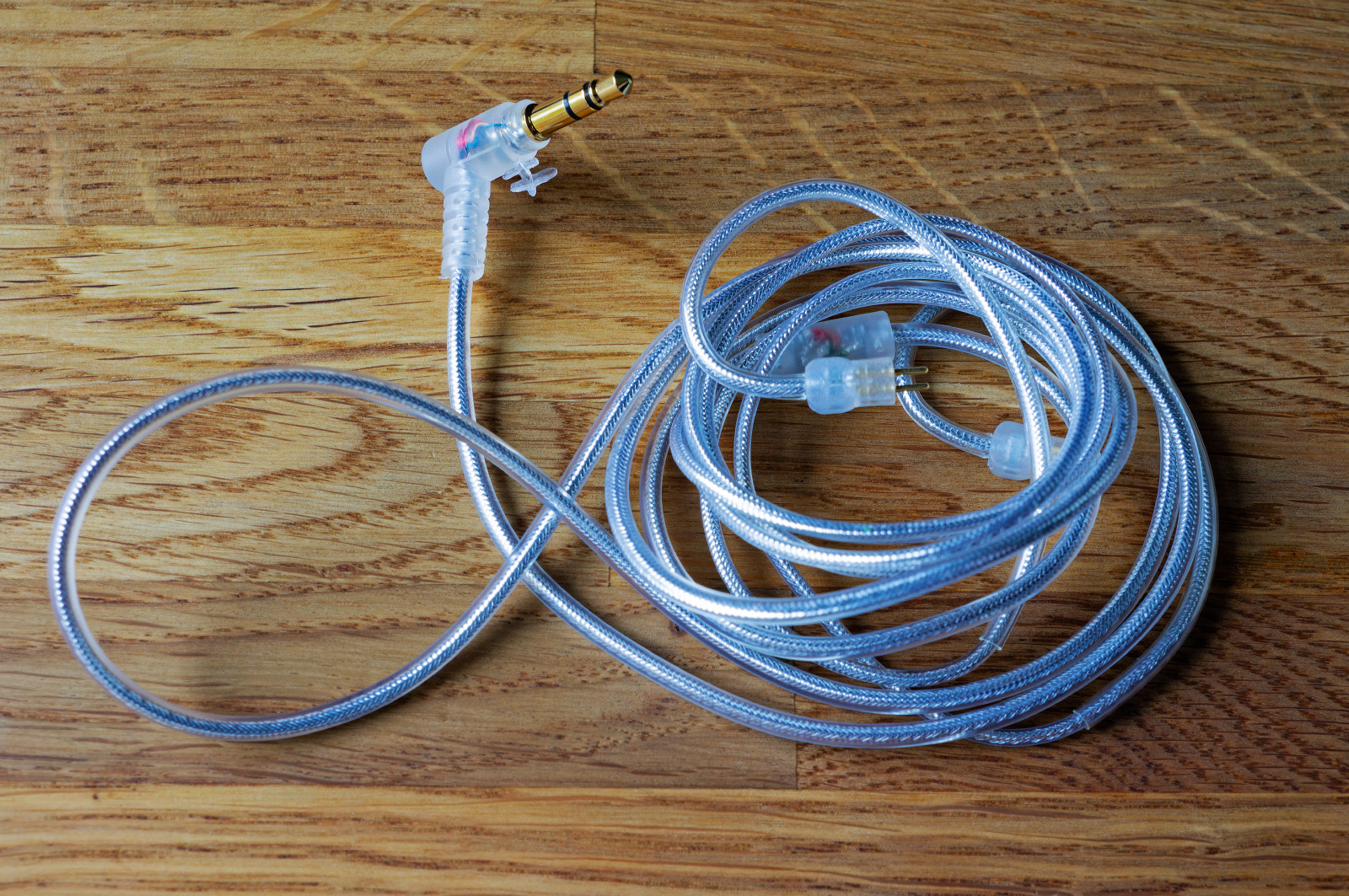
Do you think I’m the lucky lad who got a defective pair? Do you think any Chu 2 is like that?..
Ergonomics
The earpiece enclosures are very compact and smooth, which allows you to comfortably fit them in ear of almost any physiological configuration – in this regard, the Chu 1 and 2 versions are identically versatile and nice. The Chu 2 have a significantly wider sound duct diameter, I’d say. The protective caps are removable, they feature thread attachment to the sound ducts and are easier to clean (if you ever feel that cleaning urge):
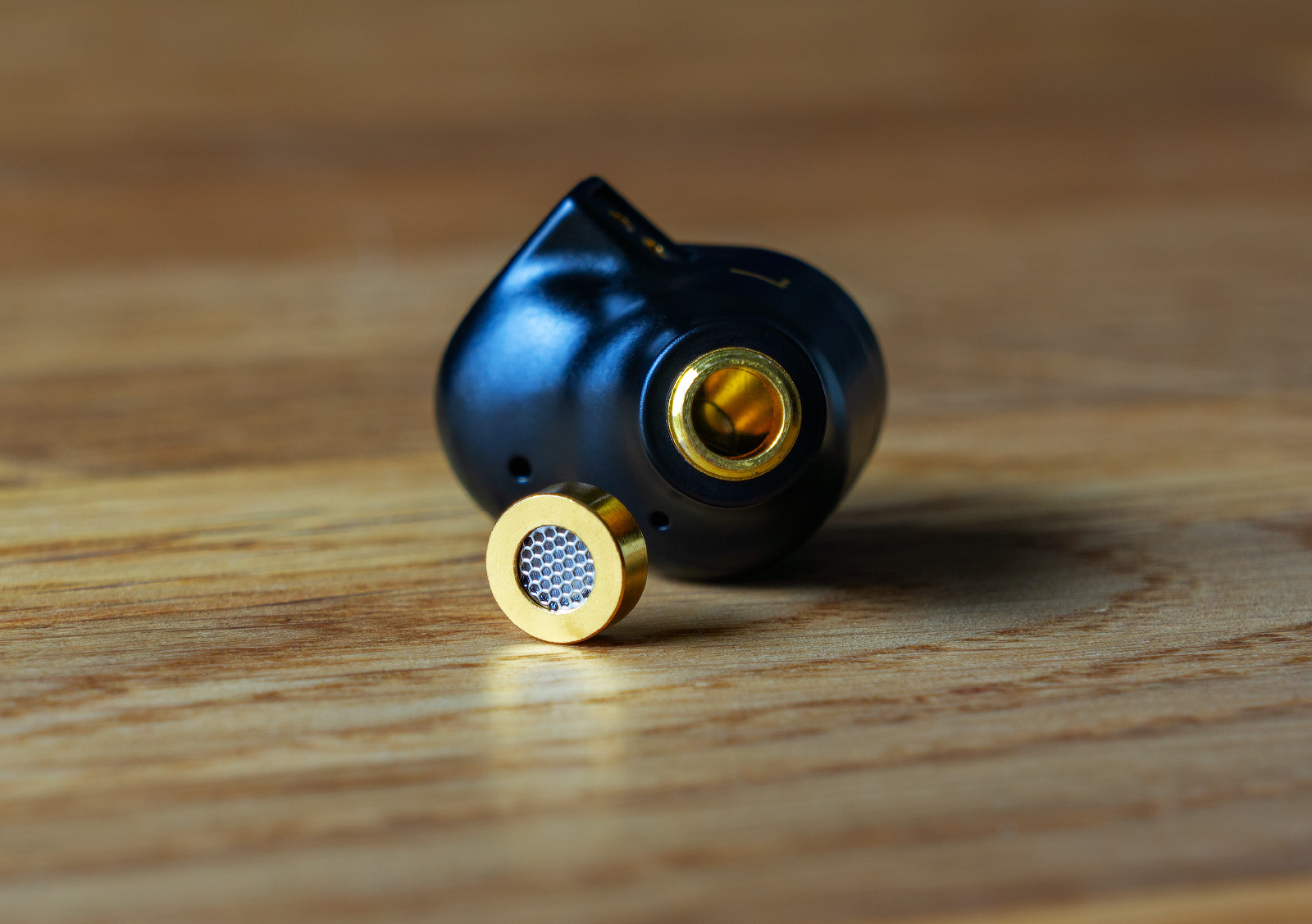
Maybe someday the manufacturer will take a chance on some replaceable ‘filters’ that would affect the sound, but for now it’s how it is.
The cable is just a plastic-braided cable with earholders.
I can’t actually formulate my impressions in any unequivocal way. On the one hand, the earpieces are comfortable to wear and use, they’re easier to clean and to maintain (thanks to the replaceable cable). On the other hand, the build quality of this pair is lower compared to the first version – though, again, maybe it’s just I’m too lucky to get a decent undefective copy.
Quick specifications overview
- Design: in-ear closed-back.
- Drivers: 1 dynamic driver.
- Impedance: 18 Ohms.
- Sensitivity: 119 dB.
Subjective sound impression
To speak bluntly, there was absolutely no need to label these headphones the Chu 2. The first Chu featured the neutral tuning (which is a rare thing to find nowadays) with a slightly ‘enlightened’ sound delivery. The Chu 2, however, represent a pretty concise V-shaped curve. Anything from the continuity side from the previous model? Nah. Just two pairs of completely different headphones.
The subbass here is thunderous, deep, unusually fast and detailed. I’m not even talking about the technical implementation of it, but about its ability to not mix with the bass (my subjective impression). In other words, if the artist didn’t add even a pinch of subbass into their track, then you wouldn’t hear it. But if the artist did add a spoonful, you’ll be able to enjoy it in all its glory. And I, being a great connoisseur of dry and neutral manners, liked it! Some electro stuff like ‘All Friends Electric’ by Djedjotronic or ‘Murk’ by Fly Dying literally massage your skull from the inside, but in a very delicate and accurate way.
The bass is smooth, dynamic and ‘thick’. It doesn’t fight with the subbass or the mid-range frequencies for its spot under the sun: it literally knows its place – even if there’s a lot of bass on the Chu 2’s plate. In terms of the bass quality: I didn’t even take my hat off – my hat took me off! Indistinct bass babbling or humming? Not gonna happen, y’all!
The middle part of the frequency range is slightly relegated to the background, the upper section is accentuated, though. That being said, some of the instruments (from that high-frequency range shelf) and female voices sound a little distant, although complete in terms of details. As far as I can hear, the subbass, the bass and the midrange section of up to 5 kHz or so are free from any narrow dips or curbs at all. Some tracks acquire a bit of sharpness, a metallic hue, though. This is particularly true for poorly mixed material based on some trendy sound models tending to make this range somewhat flatter. The section is brutally highlighted when mixing, and the Chu 2 make it sound even more bright, even shrilly and indelicate. Want some examples? There you go: ‘Cocaine’ by Nomy, ‘Lobby’ by The Kilimanjaro Darkjazz Ensemble or ‘For Whom The Bell Tolls’ by Metallica.
The upper frequency range is delivered in a very, very technical manner. It seems that the headphones play all the frequencies as far as you could possibly hear it, as if no frequencies are reduced or clipped. This all brings us to an unpleasant side of the story: not any sound material sounds nice and good with the Chu 2. All sorts of well-mixed and recorded delights, such as ‘Coloroid’ by Trigg & Gusset or ‘Street Spirit’ by Power-Haus, Christian Reindl, Eivør sound extremely impressive, especially if you keep the Chu 2 cost in mind (which is, remember, $19).
The Chu 2 also make you really feel the space perfectly with a very wide and extended sound stage with medium instrument positioning. In some tracks, you can clearly tell when a sound source is located behind your head (for example, in ‘Paranoid Eyes’ by Pink Floyd).
Generally speaking, the Chu 2 feature an energetic, engaging sound delivery with clear dominants, such as the pronounced subbass and the top of the mid-frequency range. The frequency response tuning is perfect! The only thing I’d doubt is that ringing section at around 8 kHz: both additional details and outright ‘dirt’ float up, and the headphones may sound too bright with some tracks.
Sound source choice
For my listening tests, I’ve connected the Chu 2 to the following devices.
- PC + RME ADI-2 DAC fs (‘High Power’ mode) – out-of-balance connection
- PC + RME ADI-2 DAC fs (+13 dB at the line output) + Topping A90 (High Gain) – out-of-balance connection
- The Hiby R5 player – out-of-balance connection
The only dependence I can subjectively note is an even greater accentuation of the lower frequency range as the power of the sound source increases. What I think is that the Chu 2 is definitely not a headphone model to really need such whistles.
Eartip choice
I frankly didn’t like the provided eartips – they’re significantly narrower than the sound ducts, and this is what puts additional emphasis on the already accentuated lower-range frequency. In terms of ergonomics, the eartips are perfectly normal! And yet such an effect.
For the Chu 2, I’d safely recommend something like Tangzu Tang Sancai or TRI Clarion: they don’t slip off the sound ducts and feature a nice inner diameter:
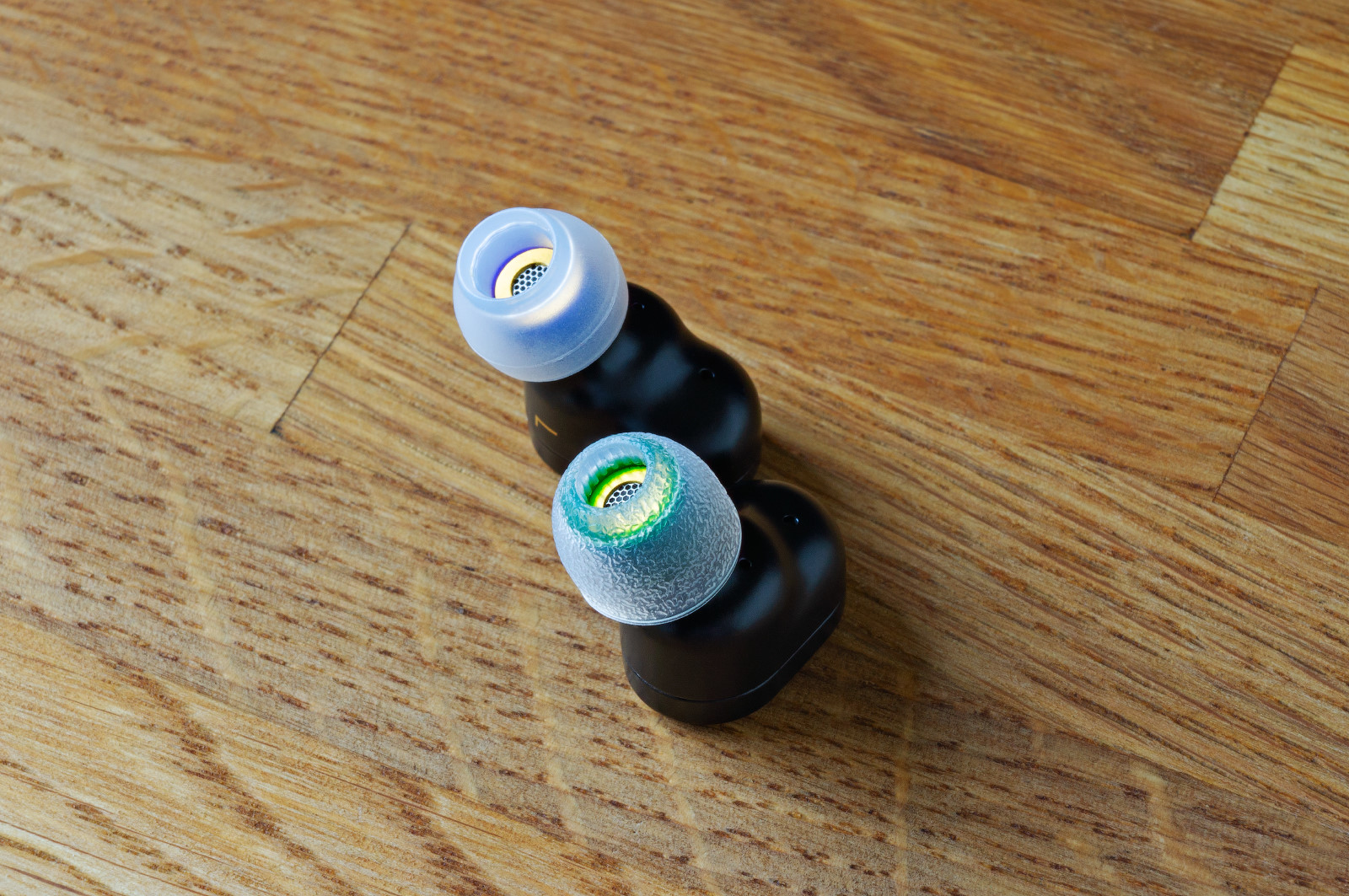
But the best of the best are probably the Whizzer SS20 (especially with the JBL Project Rock):
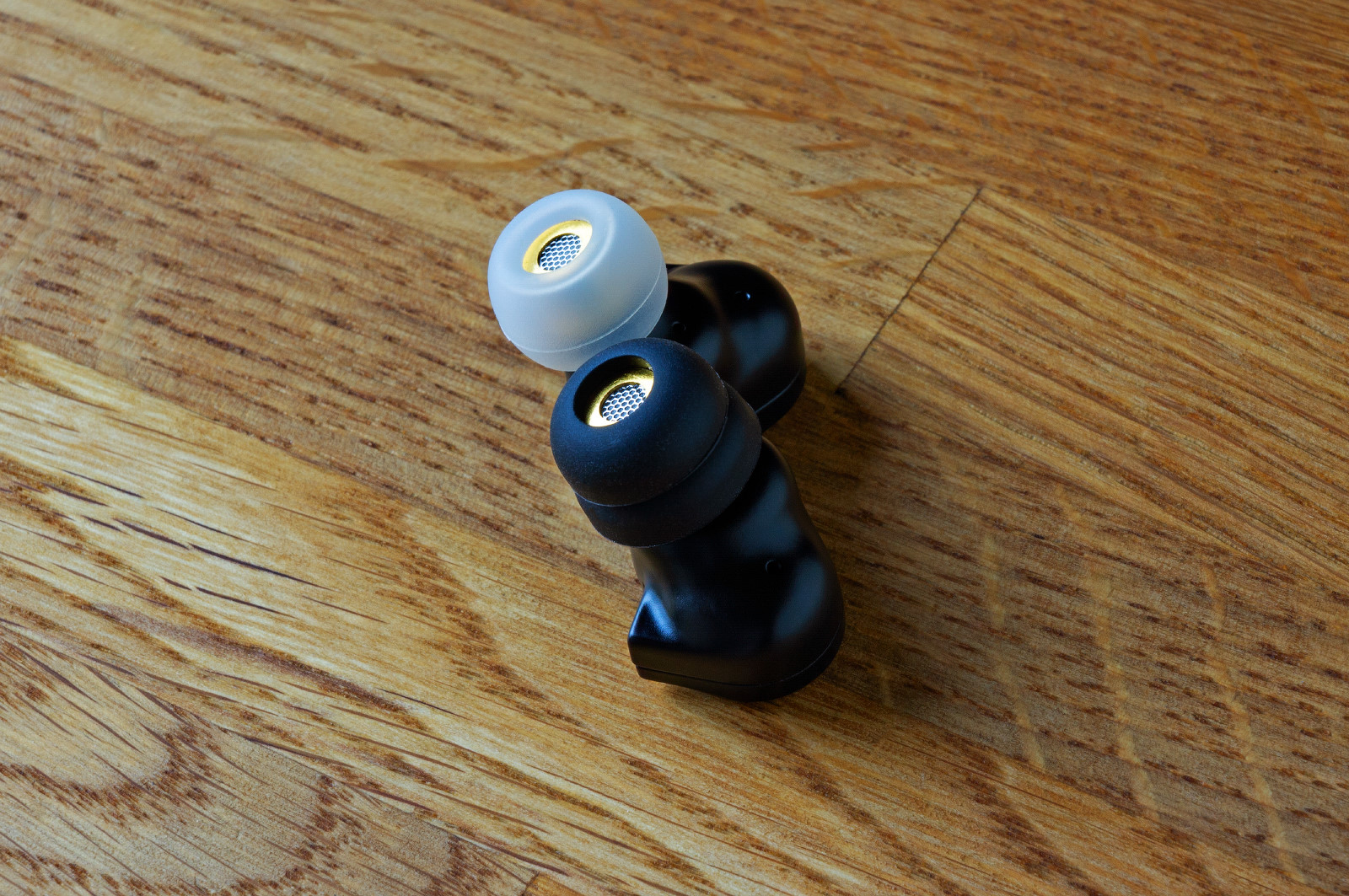
These eartips don’t allow you to push the sound ducts too deep into the ear canal, though don’t add up to the sound duct length – the eartips only 1-2 mm beyond the cap edge. And this trick somewhat highlights the mid-range and muffles the ringing in the upper section of the range.
Unfortunately, it’s incredibly difficult, if even possible, to show the difference between the results from different eartips with graphs. So please just believe my subjective observations – I can’t be too wrong here, anyways.
Measurements
The headphones were connected to the RME ADI-2 DAC (IEM output). A measuring rig conforms to the IEC60318-4 standard. For each of the earpieces, the measurements were made until 3 reliable and stable measurements were obtained for the left and right channels; any deviant measurement results were excluded. The provided eartips were used for measurements. The smoothing is indicated on the graphs. As always, for the info about rigs, graphs and headphones measurements refer to my article. The frequency response of Moondrop Chu 2 compared to the neutral IEF curve:
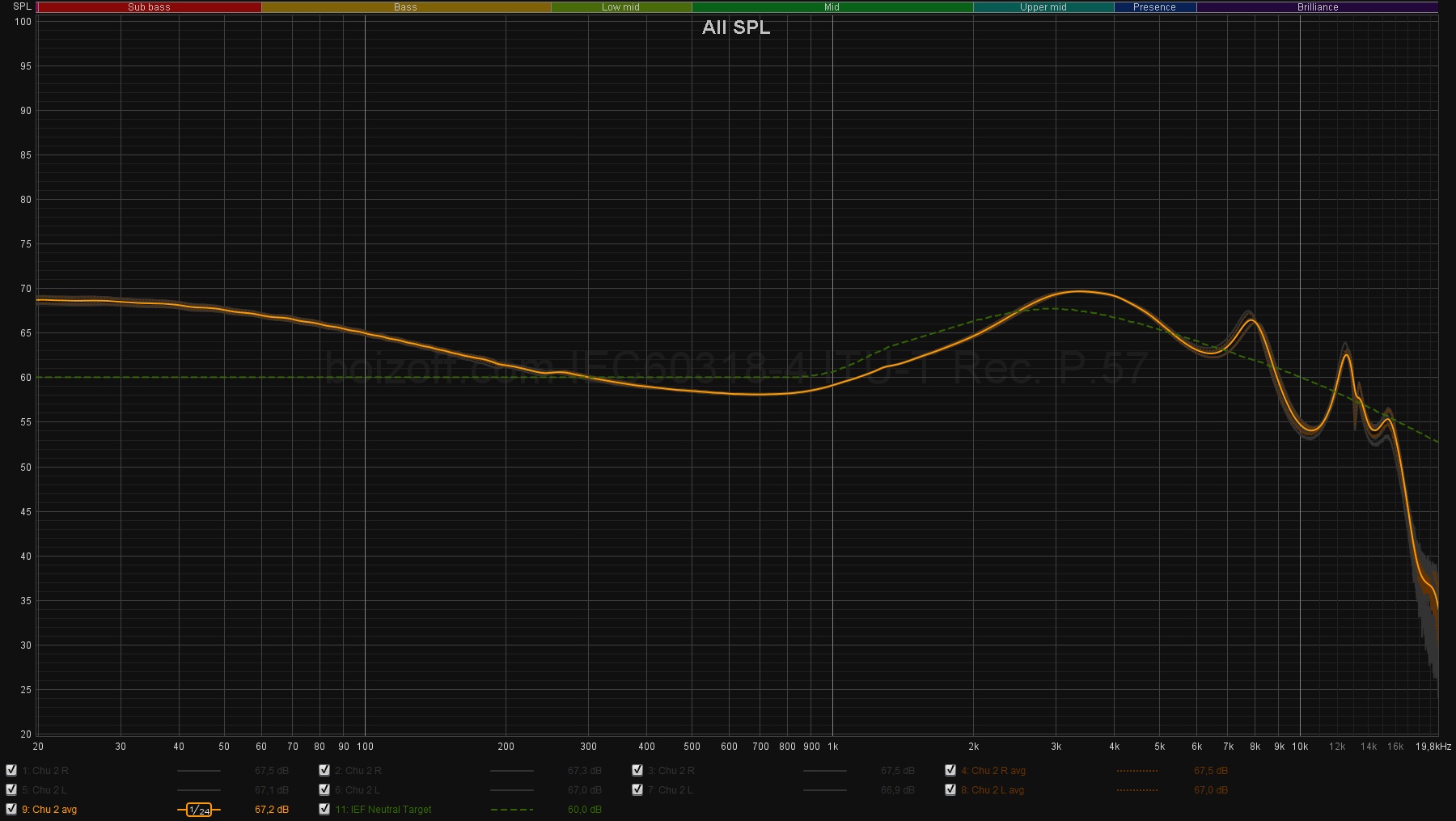
A few obvious comments:
- subbass is somewhere above the skies – at the 9 dB mark;
- the mid-range section (400 to 2000 Hz) is very smooth, but is lower than expected by 1.5 dB;
- the section around 3.7–3.8 kHz is slightly emphasized, although I’d recommend to rather emphasize the area around 2.7 kHz;
- there is a high-frequency peak, yep;
- the overall sound tuning isn’t neutral – it just isn’t!
The frequency response of Moondrop Chu 2 compared to the ‘subjective’ Harman curve:
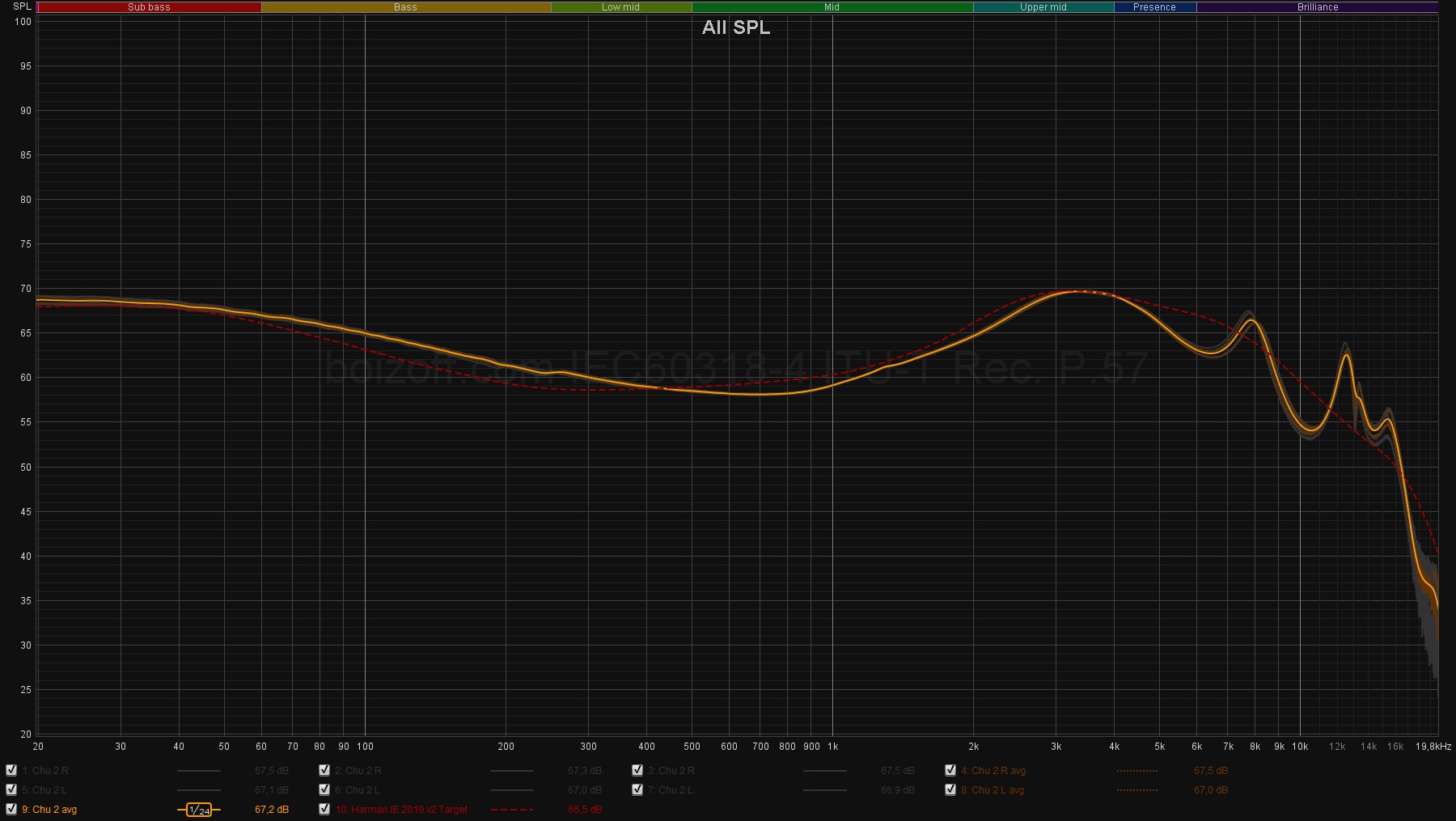
I’d also point out that the second comparison is kinda more appropriate, but there are deviations nevertheless:
- a wide area around 120 Hz is raised by 1–1.5 dB. The raise is a bad thing, the maximum raise of only 1.5 dB is a good thing;
- the midrange tuning is very close to the Harman curve.
Well, a graph you can’t rely on to assess the state of things objectively (it’s just I don’t own any really reliable rigs to measure such parameters), but you can take it into account – a cumulative spectrum with a 3-second window:
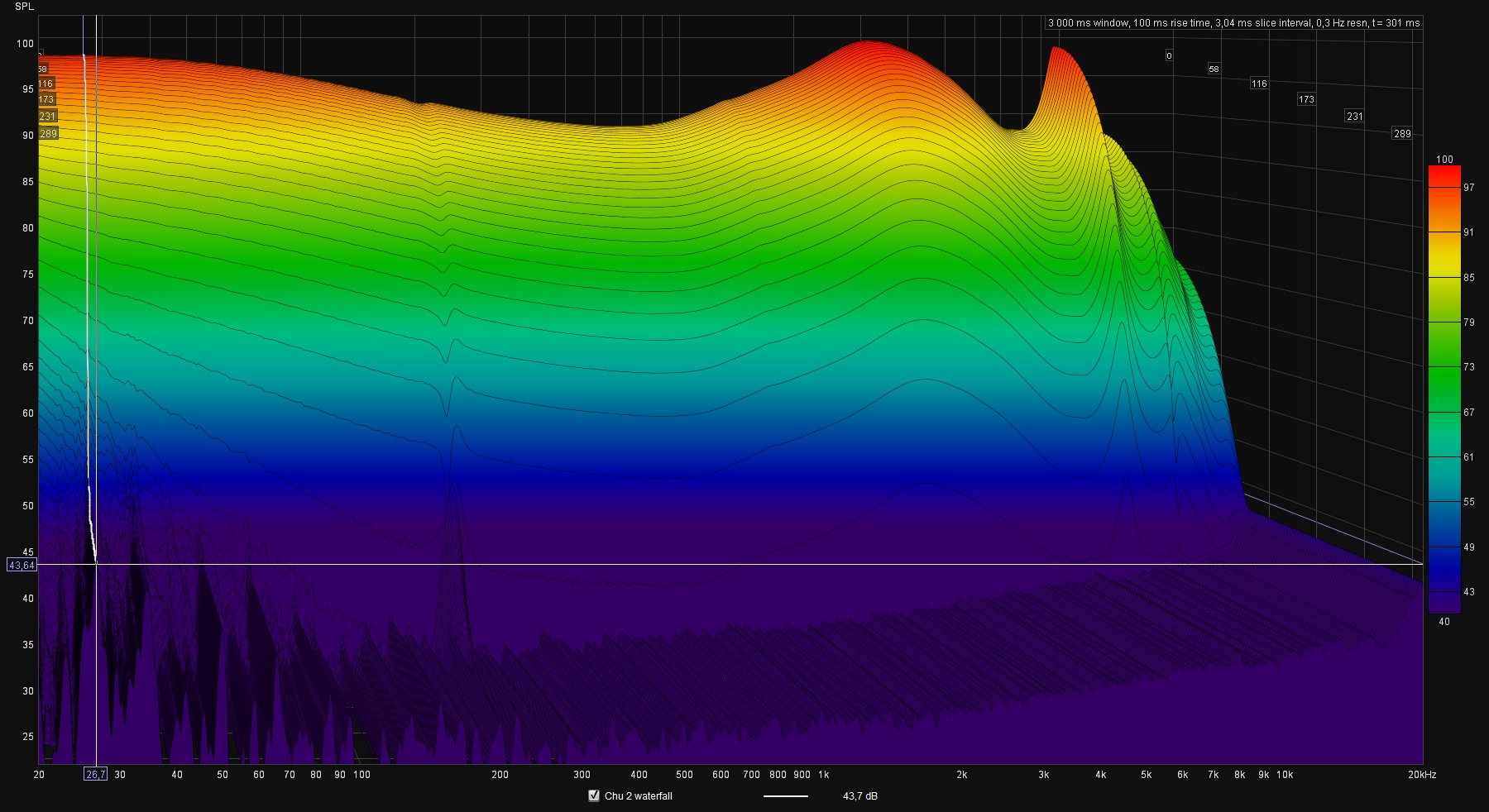
Some resonances only come to the surface in the subbass section, and even then they’re quieter than the informative signal by about 60 dB in terms of volume, that is, you’ll probably never hear those. Given the inaccuracy of my measurements, we can safely say that such a result is fantastically good – though I suppose the result would be even better with more accurate measurement rigs with less noisy microphone and other groovy features.
You know what? I think it’s thanks to the resonance absence that the subbass and bass feel so dynamic with the Chu 2.
Comparisons
The only reasonable counterpart to compare the Chu 2 to are, I think, are the Chu 1. It kinda feels the right thing to do.
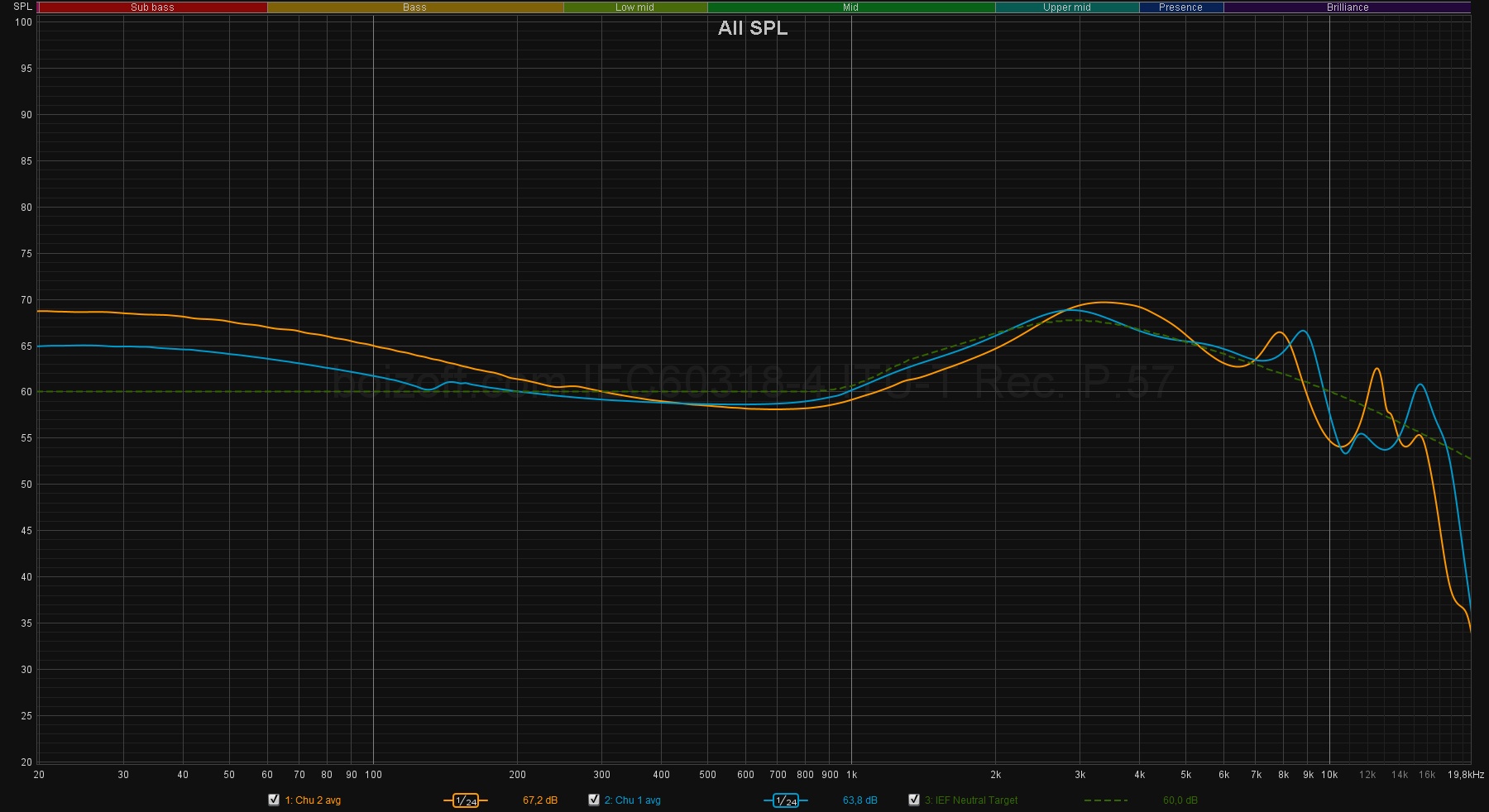
Look at the pic above, and you’ll see the two graphs for two different headphones with very different frequency responses: the neutral and the V-shaped.
Summary
I rarely speak well of subjective, ‘tasteful’ headphones, but the Chu 2 somehow hit the spot – it was very curious and pleasant to try them. And for me, a fully converted and just an old boring adept of neutral sound delivery, it was a genuine guilty pleasure to experience the Chu 2.
Another thing is that, apparently, the Chu as an idea of laughably cheap headphones with neutral tuning didn’t work at all, so the Moondrop took a shot with the mass listener. This, obviously, stripped the headphones of their uniqueness, even if this uniqueness wasn’t a thing everyone loved. It’s a bitter shame, I personally think: the first version has stuff to improve – all this could be fixed just by keeping on the same track; the update would’ve had all chances to become a legendary model.
But the manufacturer did the deal differently, so now we have the Chu 2 – just some very, very good headphones for $19 with a funky tuning… among many analogs. And this is their main problem lies: they aren’t unique in any way, they’re just one of all those models an endless number of Chinese brands (KZ, Tangzu, Blon, TRN, CCA and so on) slap and release into the same price niche.
So please don’t ask me whether or not you should buy the Chu 2. I honestly don’t know and wouldn’t know unless I test some 150–200 models of Chinese headphones, which I don’t think I’d ever do (or even consider doing). My interest lies in rare headphone models featuring something different from the rest of the market. The Chu 2 aren’t, unfortunately, one of the ‘different’ kind.
But to hell with the context! These headphones are certainly good: a technical sound delivery, a nicely and skillfully tuned frequency response and a wide sound stage are able to surprise the listener with somewhat untrue though at least convincingly ‘beautiful’ sound, and, inevitably, – give them a lot of pleasure. In other words, the Chu 2 are great, and I’m just a big audiophile grumbler, alright.

